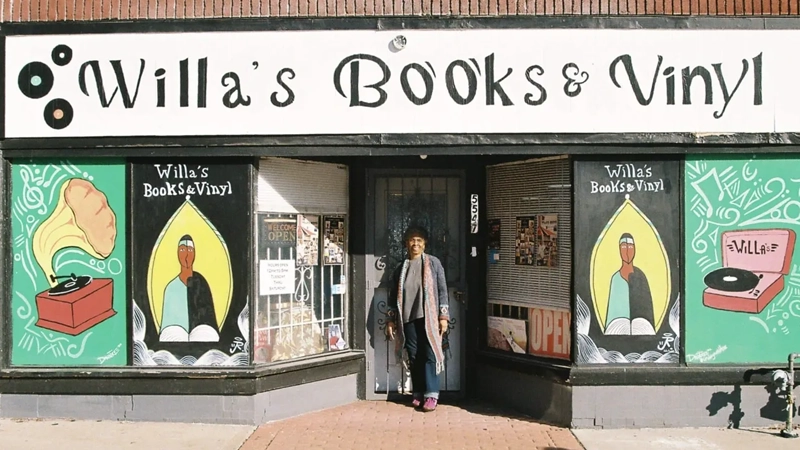News
The Local Outlet Saving Missouri’s Oldest Black-Owned Bookstore
July 16, 2025

Preserving Culture, Powering Change: How The Kansas City Defender is Building a Legacy—One Book at a Time
In a moment that embodies what community media can be when rooted in purpose, The Kansas City Defender is doing far more than chasing headlines. It’s preserving Black history, investing in Black futures, and redefining what service to community truly means.
At the helm is Ryan Sorrell—a founder who sees journalism not just as storytelling, but as a tool for liberation. This August, Sorrell and his team are launching a $500,000 capital campaign to purchase and preserve Willa’s Books & Vinyl—Missouri’s oldest Black-owned bookstore.
“The goal is to keep this archive in the Black community,” Sorrell said. “And to use the space to organize, report, and create a community hub.”
A Sacred Archive at Risk
For over 40 years, 84-year-old Willa Robinson has run the bookstore, but Willa’s is far more than that. It’s an archive of Black brilliance—home to more than 20,000 titles, including first-edition Frederick Douglass volumes and books printed in 1863, the year emancipation became real for our Black enslaved ancestors.
But like too many independent Black cultural spaces, Willa’s faced the threat of closure.
That’s when The Defender stepped in.
Sorrell and his team catalogued the entire collection and quietly paid Willa’s rent for the past eight months. Now, they’re going all in: launching a campaign to acquire the bookstore and its rare Black and African collection to ensure it stays in Kansas City’s Black community.
“Willa was going to have to sell everything to non-Black, out-of-state collectors last year,” Sorrel said. “We didn’t want that to happen, so we helped catalog her entire collection, and now she’s agreed to pass the torch to us.”
Their vision? Bigger than a bookstore.
Willa’s will become The Defender’s Liberation HQ—the outlet’s first physical space. Part public archive, part newsroom, part organizing hub, it will be a place where journalism, culture, and community power converge.
“I’m not ready to retire, but it’s time for me to retire,” Robinson told a crowd of family, longtime customers, and new faces during her final celebration and sale last week. “All of these books, all this music, all this art, is dedicated to you all.”
From Digital-First to Deeply Rooted

The Defender started as a digital-first experiment and has quickly grown into a trusted source of information for young Black audiences across the Midwest. Under the leadership of newly hired Director of Development and Revenue, Khadijah Bland, the outlet has sharpened its fundraising strategy—securing a $250,000 grant from the Kauffman Foundation and expanding its base of institutional support.
With Senior Editor Mili Mansaray joining the team, The Defender is building out its reporting chops while investing in multimedia and social strategy, including a forthcoming YouTube broadcast. Both Bland and Mansaray were hired with support from a grant provided by The Pivot Fund.
The Defender’s Instagram account already reaches up to 100,000 viewers per post—often outperforming much larger outlets.
“We have a very dense audience,” said Sorrell. “Fewer followers, but higher engagement. That’s because we’re not just online—we’re on the ground.”
A Blueprint for Movement Journalism
This is more than a story about growth—it’s a blueprint.
By anchoring their future in a beloved Black-owned bookstore, The Defender is doing what many of us dream of: building an institution that bridges past and present, story and structure, resistance and resilience.
They’re honoring Black history, supporting a Black elder, and creating space for Black futures.
“Having that physical space is going to transform our organization and our impact,” Sorrell said. “We’ll be even more present in the community—and people resonate with that.”
Tracie Powell, founder and CEO of The Pivot Fund—which supports The Defender and other community-rooted outlets—put it best: “I’m just so stinking proud. Ryan picked up the phone not knowing what was next, and look at what he’s building now.”
This isn’t just a newsroom.
It’s a movement.
And it’s growing.